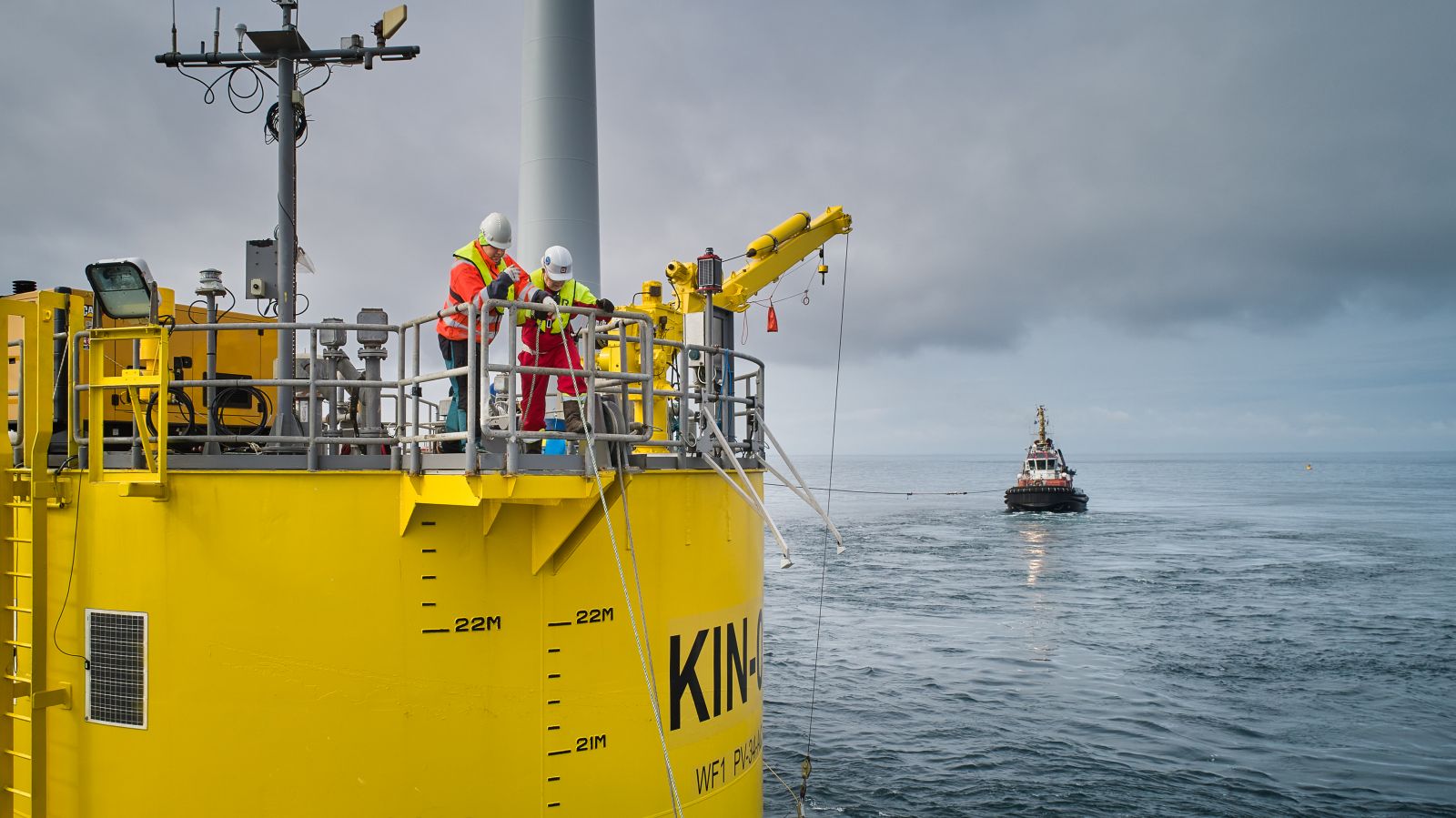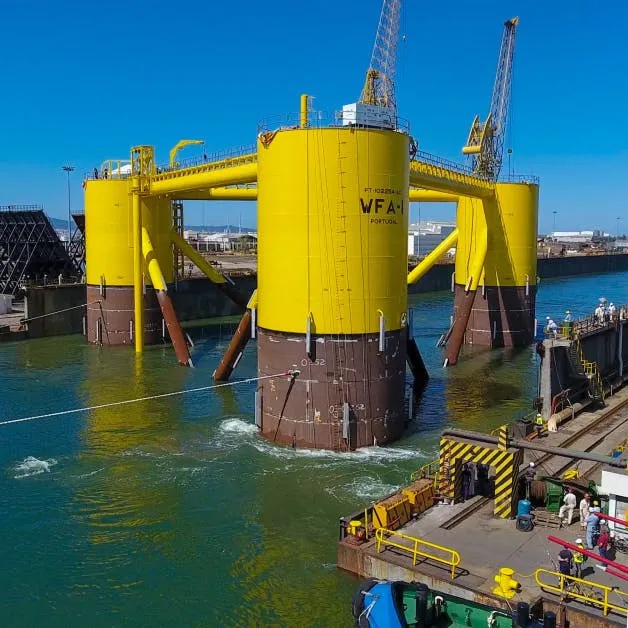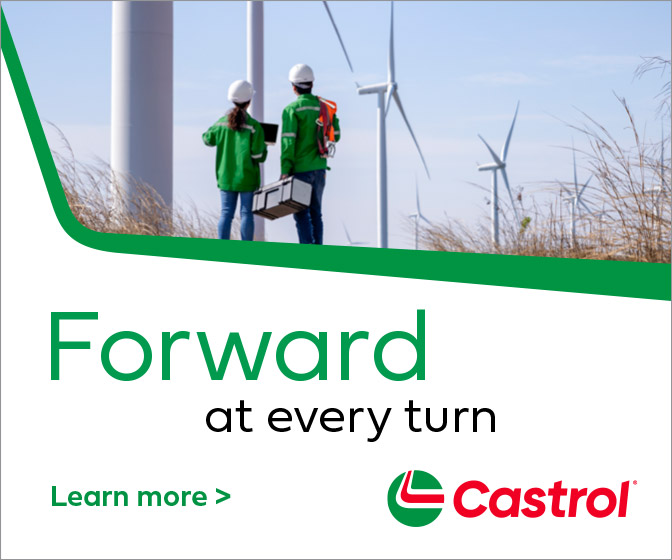Coming to America: Floating Wind
The floating wind industry, having been considered an early-stage opportunity for some time, is now fully proven. With approximately 135 MW operating globally, it stands on the brink of evolving into a mainstream offshore wind technology.
First commercial projects are expected in the mid-2020s, to be followed by gigawatts of capacity deployed around the world. The industry is confident that this will increase to tens of gigawatts in the 2030s.
There is a lot of movement in floating offshore wind globally. The Global Wind Energy Council (GWEC) estimates that 16 GW of floating offshore wind will be built globally in the next 10 years, with most of the new volume coming online from 2026.
A lot of East Asian nations are driving developments; conditions in that part of the world are ideal for deployment, i.e. water depths, good wind resources, great industrial bases, and coastal cities with massive demand. Northern Europe, in particular the North Sea, is the current hotspot leading deployment, with further leasing rounds in Scotland awarding up to 10GW.

The US Opportunity
The opportunity for floating offshore wind in the US is much larger than it appears. In fact, the technology is crucial for some states to meet their full clean energy and wider decarbonization commitments. The West Coast, with its deep-water areas, has been catapulted to the forefront of potential development with recent legislative announcements underpinning an appetite for growth.
Ambitious targets have been set worldwide and the US is no longer an exception, having taken important first steps: the Biden administration opened the coast of California to 4.6 GW of offshore wind, and the AB525 directed state agencies to set state-wide goals for offshore wind production and to develop a strategic plan for California to achieve large-scale renewable wind energy by 2045. As the 5th largest economy in the world, California boasts nearly 900 miles of shoreline, providing a real opportunity to show leadership both on a regional and global level - floating offshore wind stands ready to play a key role in helping the state achieve its SB-100 goals.
Economic boost and energy security
The sector has the potential to unlock a tremendous amount of economic development. Research from the USC Schwarzenegger Institute for State and Global Policy estimates the creation of 200,000 job-years of employment and 4,000 jobs per year to operate 10 GW of offshore wind capacity by 2040.
In addition, the clean energy generated by responsibly sited projects enhances the security of the energy supply - a major concern, especially given the annual cycle of devastation caused by wildfires.
Earlier this year, Oregon passed legislation aimed at developing 3 GW of offshore wind by 2030, after discussions involving technology, port infrastructure, transmission, and costs. Oregon also awarded a research grant to study the environmental impact of offshore wind.
 Floating wind has long had ties with both Oregon and California. In late 2012, the US Department of Energy awarded a grant to support the development of a demonstration project in Oregon, as part of the Advanced Technology Demonstration Program. The 24 MW project featured 8 MW wind turbines sited in water depths averaging 450 m, with the objective of advancing floating technology to unlock the enormous resource potential of the West Coast of the United States. Almost a decade later, the lessons learned from the project are directly informing the development of the Redwood Coast Offshore Wind Project, located just 300 km south, which is expected to achieve first power by 2026.
Floating wind has long had ties with both Oregon and California. In late 2012, the US Department of Energy awarded a grant to support the development of a demonstration project in Oregon, as part of the Advanced Technology Demonstration Program. The 24 MW project featured 8 MW wind turbines sited in water depths averaging 450 m, with the objective of advancing floating technology to unlock the enormous resource potential of the West Coast of the United States. Almost a decade later, the lessons learned from the project are directly informing the development of the Redwood Coast Offshore Wind Project, located just 300 km south, which is expected to achieve first power by 2026.
While we gravitate to the West Coast when talking about floating offshore wind in the US, there are opportunities on the East Coast as well, with deeper sites opening up. For example, Maine and the Gulf of Mexico present significant opportunities, especially for the development of supply chain.
The vision for the future, and particularly for the US, is deploying floating offshore wind at scale and with speed. The sector still has important challenges to overcome: the cost of floating wind needs to fall in line with bottom-fixed, and delivery risks need to be reduced. Pilot and pre-commercial projects have proven the technology, and the industry is ready for commercial-scale projects.
Collaboration is key to delivery: this includes project developers, the entire supply chain, communities, stakeholders, and government coming together to deliver growth of an industry that will deliver jobs, economic growth, infrastructure benefits and help regenerate local communities.
Amisha Patel is Head of Public Affairs at Principle Power, an independent technology and services provider offering solutions for floating offshore wind projects that span the entire project lifecycle, from development to decommissioning.
Principle Power | www.principlepower.com
Author: Amisha Patel
Volume: 2022 January/February












.jpg?r=8253)